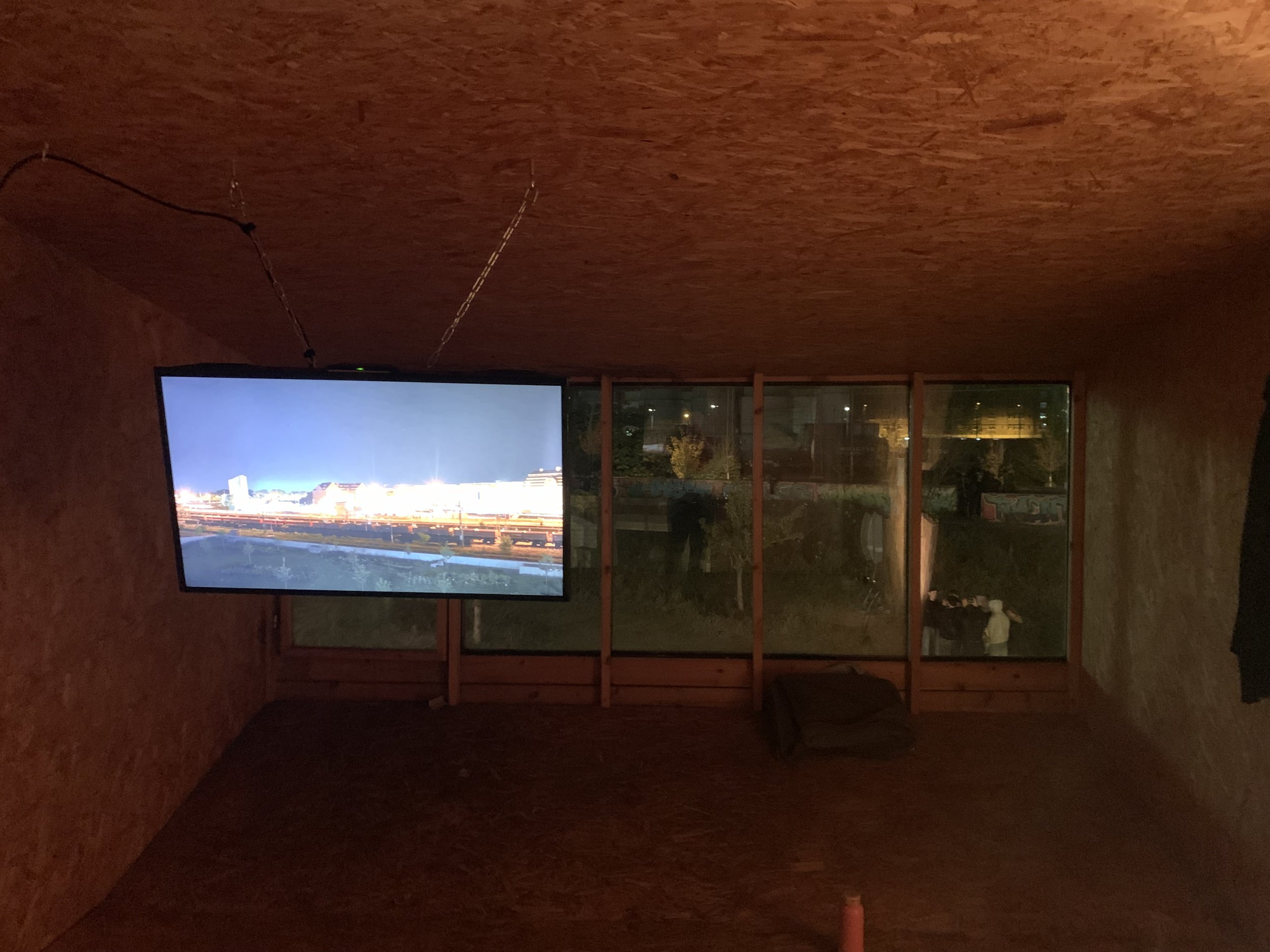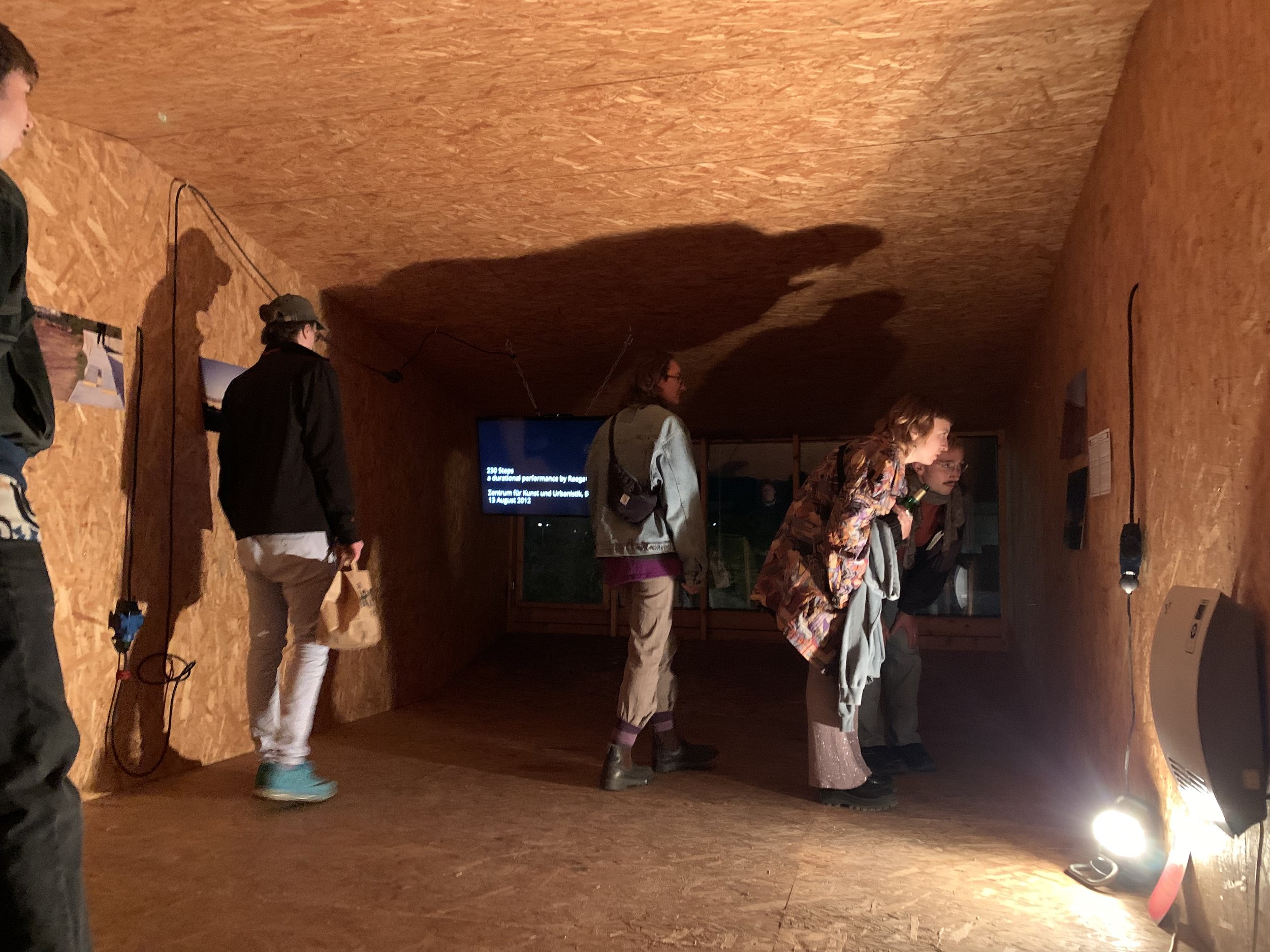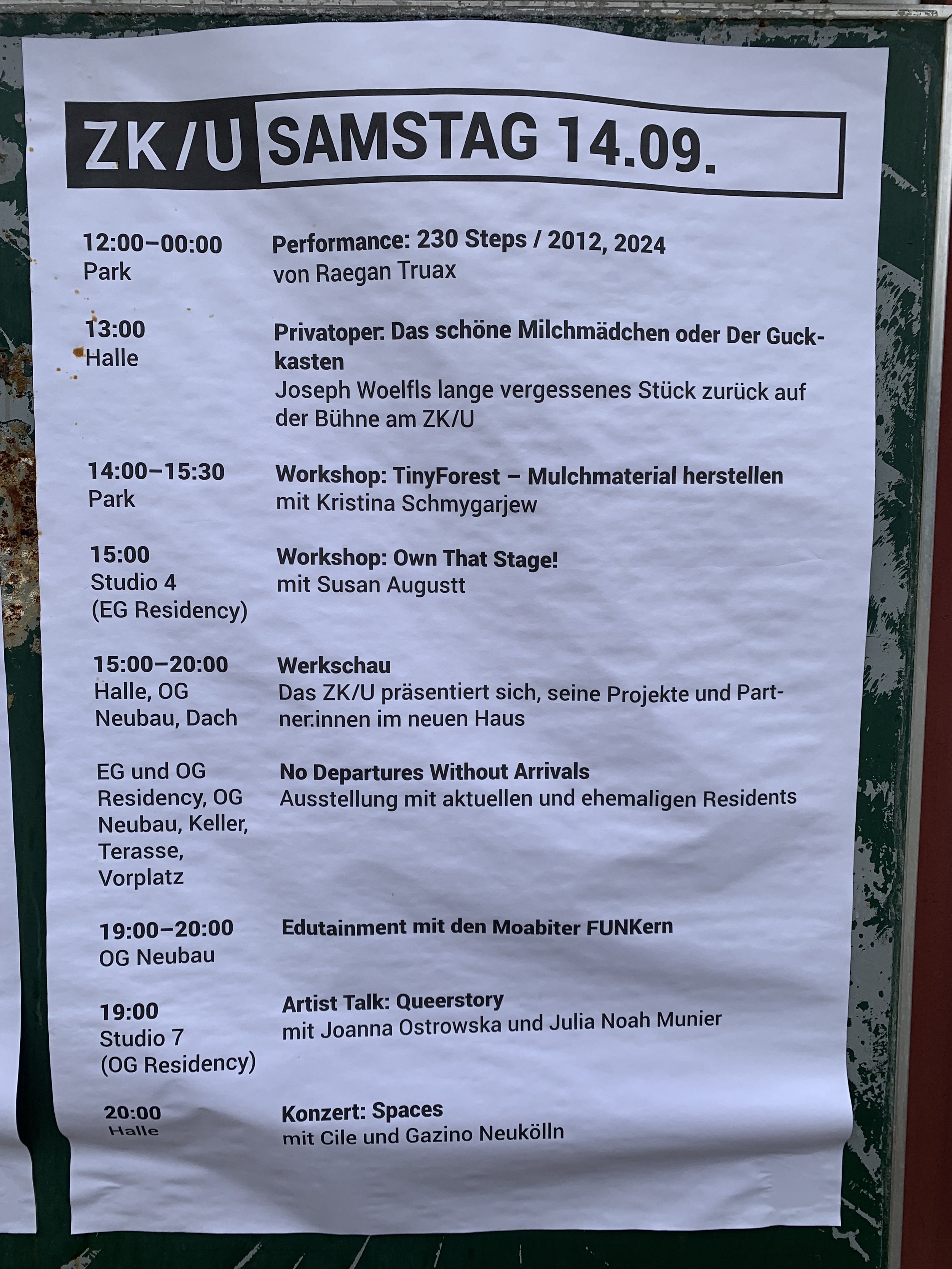230 Steps/ 2012, 2024
September 14, 2024
duration: 12 hours
location: Zentrum für Kunst und Urbanistik, Berlin
This project was supported, in part, by a Foundation for Contemporary Arts Emergency Grant.
“Knocked back….it resonates with the truth of where we are. What we can take and what we can’t take…and on some level, on some level, it’s unbearable.”
- Dr. Helen Paris responding to 230 Steps / 2012, 2024
To walk on top of a wall is to inhabit a liminal space, questioning boundaries, movement, and territory.
For Berlin Art Week 2024, I was commissioned to reimagine my 2012 performance 230 Steps and create a new site-specific durational performance as part of No Departures Without Arrivals at ZK/U in Berlin. 230 Steps / 2012, 2024 highlights a body that stutters, stalls, crumbles, and resists — provoking tension between vertical upright forward movement and other ways of moving.
Photo: Giuliana Grippo
Background
230 steps (2012) was performed for 18 hours and 51 minutes on August 13, 2012. It was the first live performance at ZK/U when the art and project space opened. It was also my first significant durational performance and the moment when I professionally understood duration as the primary and most generative material for my artistic work.
August 13 references the day Berliners awoke to discover a barbed wire fence had gone up overnight separating West and East Berlin in 1961. The fence was the footprint for the Berlin wall which would physically and ideologically govern how bodies could move, work, communicate, and live daily life for twenty-eight years. Stepping into this history — while also provoking new questions about the bounds of space, movement, territory, and liminality — I performed 230 Steps on top of a wall marking the perimeter between the public park where ZK/U’s building resides and the public street beyond the art center. I walked on top of the wall in one direction, experimenting with time, pace, and rhythm. I performed without sitting down, speaking, or taking breaks. I did not bring food, water, or a timepiece with me and I left several elements up to chance and spectator interaction. One person placed wooden planks over a large gap in the wall to help me cross. Several others retrieved clothing I had shed during the hot day and carried it to where I stood during the cool night. A handful of people stood with me.
Taking 230 Steps in 2024
Today, the violence done to bodies - and the ways bodies are regulated, made spectacle, and murdered relative to border, territory, and occupation, surfaces in a new way, no less urgent than in decades past. Israel is committing genocide against the Palestinian people and the West continues to fund and arm their efforts, with large packages of aid coming from Germany where the performance took place and the United States where I am from. Additionally, despite different rhetoric regarding immigration, right-wing radicals and supposed liberal leaders take very similar approaches to patrolling and enforcing physical and idealogical borders as well as denying access to asylum and humanitarian refuge.
When the curators invited me to reimagine my 2012 performance, rather than offering a strict re-performance, 230 Steps/ 2012, 2024 sustained a horizontal choreography. Utilizing the same wall I walked on during my 2012 performance, my body, duration, and questions about “movement” (both bodily movement and political movement) became the primary materials for the work. I began the performance by cutting off the sleeves of the shirt I wore during the 2012 performance and putting it on before walking out to the wall where I performed on my back, taking slow intentional steps.
On my back but still taking steps provoked tensions between vertical upright forward movement and a body that falls, stalls, crumbles, is knocked back, stays down, and yet continues laboring to move. On my back, I stayed in motion, my hands and arms slowly extending and retracting, my leg limbs lifting, feet stepping nowhere. I paced my breath to the frigidity of the relentless wind and kept my eyes open, gazing at the sky, toward people in the park, and back toward the art party happening in the main ZK/U building. A woman came and put her head on my chest and cried. Traffic in the street below stopped every now and then when a driver would pull over and yell up to me, my left leg dangling and body curved toward the wall’s edge. As night fell, someone put a blanket on me, then another blanket. I took the blankets off. Someone put them back on. The wind persisted. My entire body shook but I think the shiver was mostly visible in my hands and audible in the hitched shakiness of my breath. On my back, on my back but still taking steps.
Physically, artistically and politically, 230 Steps/ 2012, 2024 asks its viewer to participate in and not hide from, distance, or cover up the juxtaposed decay, difficulty, and strength in staying still long enough to sense a crumbling body. Maybe in this crumble, this willingness to crumble, we find other movements.
Photo: Philip Horst
Photo: Philip Horst
Photo: Philip Horst
Photo: Philip Horst
Photo: Giuliana Grippo
Photo: Philip Horst
Photo: Giuliana Grippo
Photo: Giuliana Grippo
Photo: Sara Faridamin
Photo: Sara Faridamin
Exhibition view of No Departures Without Arrivals featuring the timelapse documentation of 230 Steps (2012) in proximity to the wall on the outer perimeter of the park. The group exhibition was my first invitation to return to the site of one of my previous performances to create a new piece while also exhibiting documentation of the prior work. Curious how a body archives and experiences time (over time), the performance in dialogue with the visual exhibition also underscores how my body has significantly changed since the 2012 performance. In addition to aging twelve years (the duration of the performance), I now navigate the world with a connective tissue disease and disability. Across the span of time, the slowly walking, standing and stoic body in 2012 encounters itself stalled at a fixed point in 2024. No longer able or interested in walking, I fall, I crumble — and duration, always duration — remains the access point for my body to find other movements.
Photo: Kristina Miller














